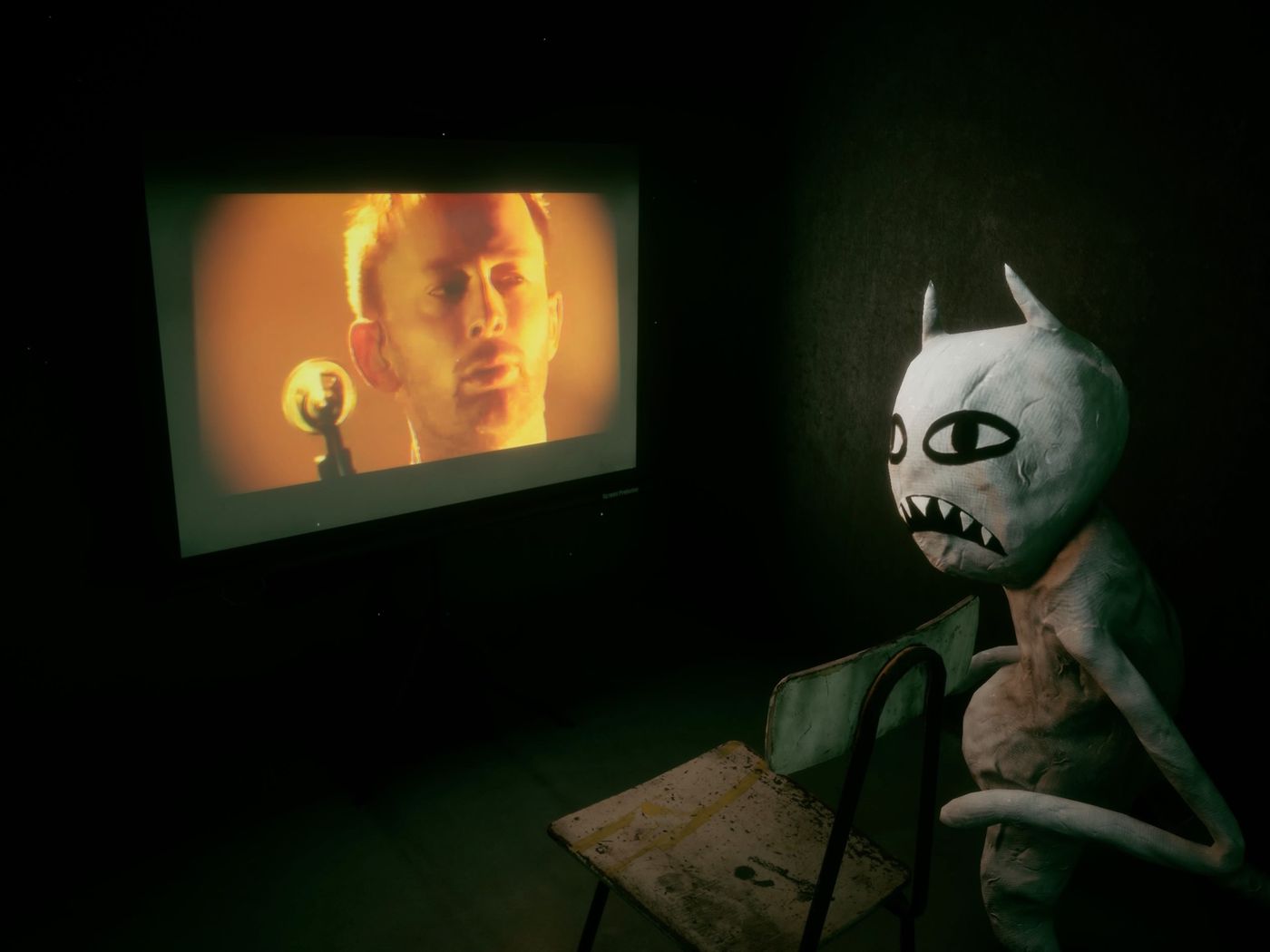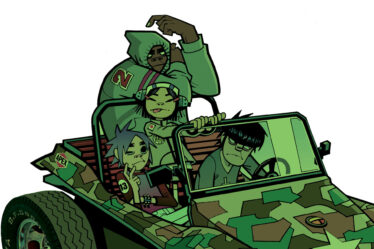
By: Maria Kuttikadan
In theory, Kid A Mnesia Exhibit is a walking simulator where you walk through halls of Radiohead music and look at its associated art. In practice, the Kid A Mnesia Exhibit feels like having a bucket of molten lead poured down your throat while you are being carefully vivisected, but in a good way. From the moment this “game” opens in a paper forest of raw edges and drawn shapes, you know that what you have on your hands is not simply an exhibition. It is almost an entirely new art form.
Originally conceptualized to be a physical museum, plans to create a physical Kid A Mnesia exhibit were put on hold and then canceled for a multitude of reasons, the most notable of which included pandemic precautions and “design infeasibility.” The original concept involved the look of shipping containers being crashed into the Royal Albert Concert Hall, a brutalist foreign, creature-object-place thing, jarring against its surroundings in the most literal sense. The effort of attaching physicality to music was another thing. With how abstract and conceptual most Radiohead music is, there are very few defining visuals to single out and place in a physical environment. The constraints of physics would bear too much of a load on the artistic sensibilities of the project. This is all the more obvious when one looks at the virtual exhibit, sees the translucent column of amber, the ever-changing pyramid, the figures pacing the exhibit, and the beast tapping its pointed hooves. This is an exhibit that seems tailor-made to be enjoyed through the interactivity that video games provide—allowing the player the ability to move freely around the world but allowing the artist to move the world freely around the player.
The exhibit seems to take pains to remove physicality from the experience of listening to Radiohead music. Making you, the player, forget the physical body that you occupy, losing your senses to the barrage of music, visuals and deeply, deeply unsettling changes to otherwise familiar melodies. In one room, The National Anthem plays faint and distorted keyboard chords, warbling and high pitched, televisions surrounding you playing static, refusing to ground the exhibit in reality. In the center is an amber column of light, stretching immeasurably far into the sky, the top disappearing from view. When you enter the column, the bass and the drums surge to life, pounding in your ears and forcing your heart to beat in time to the music. Step out of the column, and it’s gone again. The only place you can hear the vocals is in an old, dilapidated phone booth, ringing, singing, and then dead again. Of course, none of the instruments come along if you want to listen to the vocals. It’s just you, alone in a phone booth, listening to a man hoarsely sing the National Anthem down the phone line. The exhibit also makes a great effort never to show you an actual video of any concerts, except in one small part. If you sit down, in a cramped, dark theatre with a weird demon thing, you can watch uninterrupted concert footage. Alone with the demon, it judges your presence. To add real footage and real people is an imposition upon the laws of the world.
I think that more albums should be recreated like this. In a video by Jacob Geller, “Games that aren’t Games,” he expresses that his problem with music videos has always been that they “limit the imagination” and turn an immaterial experience into a very concrete one. I think that the Kid A Mnesia exhibit doesn’t fall into this pitfall because it simply defies the definition. It refuses to be any one thing and doesn’t restrict your imagination. It showcases the artist’s vision and intent but allows the audience to inlay their own perceptions of it.
The exhibit emphasizes agency and movement in the way the audience interacts with the music. You are never just experiencing the music; you are always making an active choice to listen to a particular part of the track, forming your own perceptions through the infinite combination of ways in which you can choose to mold your experience. This opens up a whole new possibility as to what “an album” can be. It no longer needs to be locked into .mp3 files, vinyl records, and CDs while the listener stays planted firmly outside the music. It allows the audience to actively participate in how the music is played.



